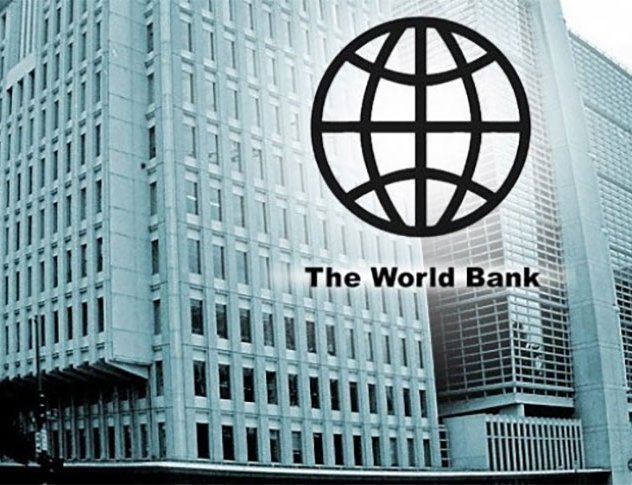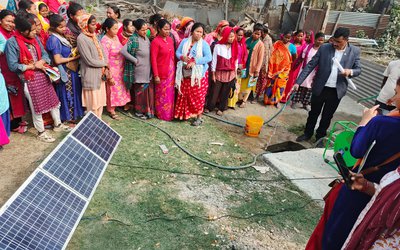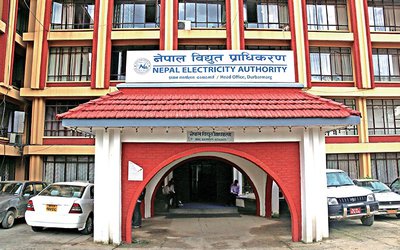
Despite advancements in certain sectors, Nepal's economy is not anticipated to reach previous growth estimates. In light of escalating global economic uncertainties, the World Bank has adjusted its growth forecast for Nepal downwards, mirroring broader concerns throughout South Asia.
According to the latest South Asia Development Update, titled Taxing Times, the World Bank predicts that Nepal's GDP growth will decelerate to 4.5 percent in FY 2024/25, primarily due to the devastation caused by floods and landslides. Growth is projected to reach 5.2 percent in FY 2025/26, with persistent structural weaknesses in the financial sector being a contributing factor.
The report underscores that the overall growth prospects for South Asia are weakening, with the region's GDP expected to expand by 5.8 percent in 2025, a decrease of 0.4 percentage points from the previous forecast in October. Growth is anticipated to marginally increase to 6.1 percent in 2026, although this outlook remains susceptible to various global and domestic risks, including constrained fiscal capacity and policy uncertainties.
Martin Raiser, World Bank Vice President for South Asia, remarked, "A series of shocks in the past decade have left South Asian nations with limited buffers to navigate an increasingly challenging global landscape. The region necessitates targeted reforms to address vulnerabilities such as fragile fiscal positions, underdeveloped agricultural sectors, and the repercussions of climate-related disasters."
The report stresses the need for South Asian nations to strengthen domestic revenue mobilization. Although tax rates are relatively high compared to other developing regions, tax collection remains inefficient. From 2019 to 2023, government revenues in South Asia averaged just 18 percent of GDP, well below the 24 percent average for other developing economies. The shortfall is particularly evident in consumption taxes, as well as corporate and personal income taxes.
The World Bank emphasizes that improving tax collection and fiscal discipline will be critical for Nepal and other countries in the region to build economic resilience and address long-term development challenges.
Tax revenues in South Asia are estimated to be 1 to 7 percentage points of GDP below their potential, based on existing tax rates. Some of this shortfall is explained by the widespread informality and large agricultural sectors in the region. However, even after taking this into account, sizable tax gaps remain, highlighting the need for improved tax policy and administration.
“Low revenues are at the root of South Asia’s fiscal fragility and could threaten macroeconomic stability, especially in times of elevated uncertainty,” said Franziska Ohnsorge, World Bank Chief Economist for South Asia. “South Asian tax rates are relatively high, but collection is weak, leaving those who pay taxes with high burdens and governments with insufficient funds to improve basic services.”
The report recommends a range of policies to improve tax revenues by eliminating loopholes, streamlining tax codes, tightening enforcement, and facilitating tax compliance. This includes paring back tax exemptions; simplifying and unifying the tax regime to reduce incentives to operate in the informal sector; and using digital technology to identify taxpayers and facilitate collection. The report notes the potential of adopting pollution pricing, which could help address the high levels of air and water pollution while raising government revenues.
Country Outlooks
In Afghanistan, with aid declining, the economy is estimated to have grown by 2.5 percent in FY24-25, slower than the pace of population growth and growth is forecast to increase only moderately to 2.2 percent in 2025/26.
In Bangladesh, growth is expected to slow in FY24/25 to 3.3 percent amid political uncertainty and persistent financial challenges, and the growth rebound in FY25/26 has been downgraded to 4.9 percent.
In Bhutan, the forecast for FY24/25 has been downgraded to 6.6 percent due to weak agriculture sector growth but upgraded in FY25/26 to 7.6 percent due to expected strength in hydropower construction.
In India, growth is expected to slow from 6.5 percent in FY24/25 to 6.3 percent as in FY25/26 as the benefits to private investment from monetary easing and regulatory streamlining are expected to be offset by global economic weakness and policy uncertainty.
In Maldives, the completion of a new airport terminal will contribute to 5.7 percent growth in 2025, although challenges in meeting external debt obligations continue to pose a downside risk.
In Pakistan, the economy continues to recover from a combination of natural disasters, external pressures, and inflation, and is expected grow by 2.7 percent in FY24/25 and 3.1 percent in FY25/26.
In Sri Lanka, the government has made further progress with debt restructuring, and a projected rebound in investment and external demand is expected to lift growth in 2025 to 3.5 percent before it returns to 3.1 percent in 2026.
- MONETARY POLICY: Disappointing Outcome
- Jul 17, 2025
- MELAMCHI WATER SUPPLY: No Interruption During Monsoon
- Jun 25, 2025
- KOREAN RETURNEES: Successful Integration
- Jun 25, 2025
- UPPER TRISHULI-1: Engaging With Local
- Jun 25, 2025
- IME GROUP: Twenty Five Years Of Journey
- Jun 24, 2025















